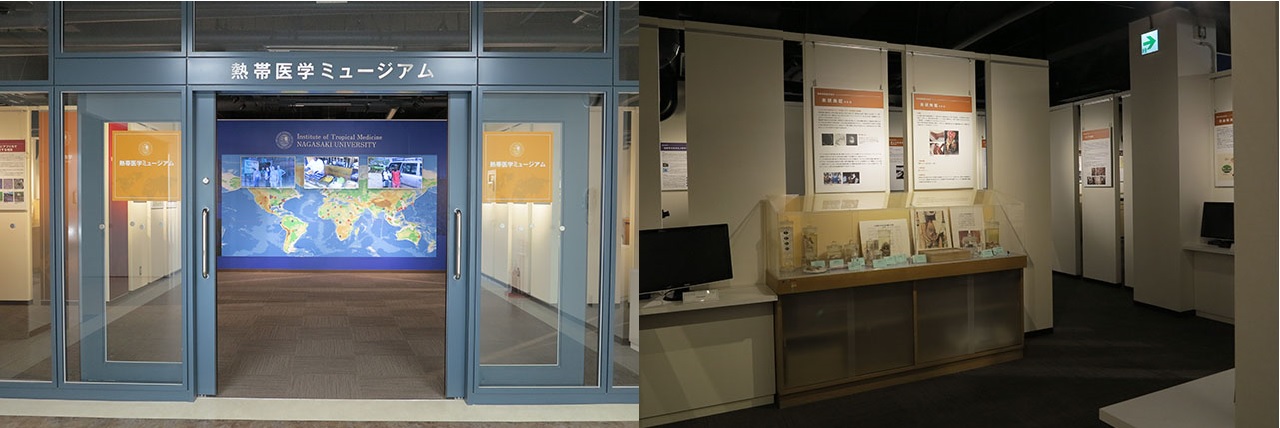Tropical Medicine Museum

The predecessor of the Museum of Tropical Medicine was the "Tropical Medicine Reference Room", established in 1974. It was later reorganized into the "Resource and Information Center for Tropical Diseases" (1997) and the "Research Center for Tropical Infectious Diseases" (2001) and became the "Museum of Tropical Medicine" in April 2008, where it remains today.
The exhibition room was originally located on the 1st floor of the Institute of Tropical Medicine (current Administration office). It was moved to the former JAERI Building No.2 with the "A-bomb Medical Museum" in April 2014. Together with the "Modern Medical Materials Exhibition Room" in the Medical Library, and the "150th Anniversary Museum" in Ryojyun Kaikan, it has become museums that utilizes the tradition and characteristics of Nagasaki University, which was founded as a medical school. The new museum was designed and expanded to welcome many visitors by taking advantage of the traditions and characteristics of Nagasaki University. The relocation increased the exhibition area by 1.5 times.
Members
- Professor and head
- Wataru Iijima
- Technologist
- Kazuo Araki
- Research Fellow
- Ayaka Sato
- Assistant
- Makovieieva Diana
- Assistant
- Deng Quan
- Assistant
- Hao Hong Yi
- Assistant
- Akane Maruyama
- Assistant
- Zhu Yongming
The museum preserves and exhibits various pathogens (parasites, bacteria, and viruses), specimens of vector insects and dangerous animals, visual materials, documents, and other valuable materials related to the history of medicine, as well as panels describing tropical diseases and other infectious diseases. A special section has been created where visitors can classify mosquitoes and separate male from female, with the aim of increasing interest and understanding of tropical infectious diseases among many people. The museum also provides explanations in English and Chinese using tablets.
The Institute of Tropical Medicine manages the "Summer School on Tropical Medicine and Emerging Viral Infectious Diseases" during the summer vacation for junior and senior high school students, in order to communicate the research activities of the Institute of Tropical Medicine to the society and to provide an opportunity to focus on infectious diseases, medicine and public health in the world.
The IT (Information Technology) environment will be improved by upgrading servers and network equipment, and efforts will be made to maintain a high level of security at the Institute of Tropical Medicine. In addition, the Museum of Tropical Medicine is responsible for the maintenance of the IT environment, including the loan of IT equipment to meet the diverse needs of the Institute's researchers and other users.
